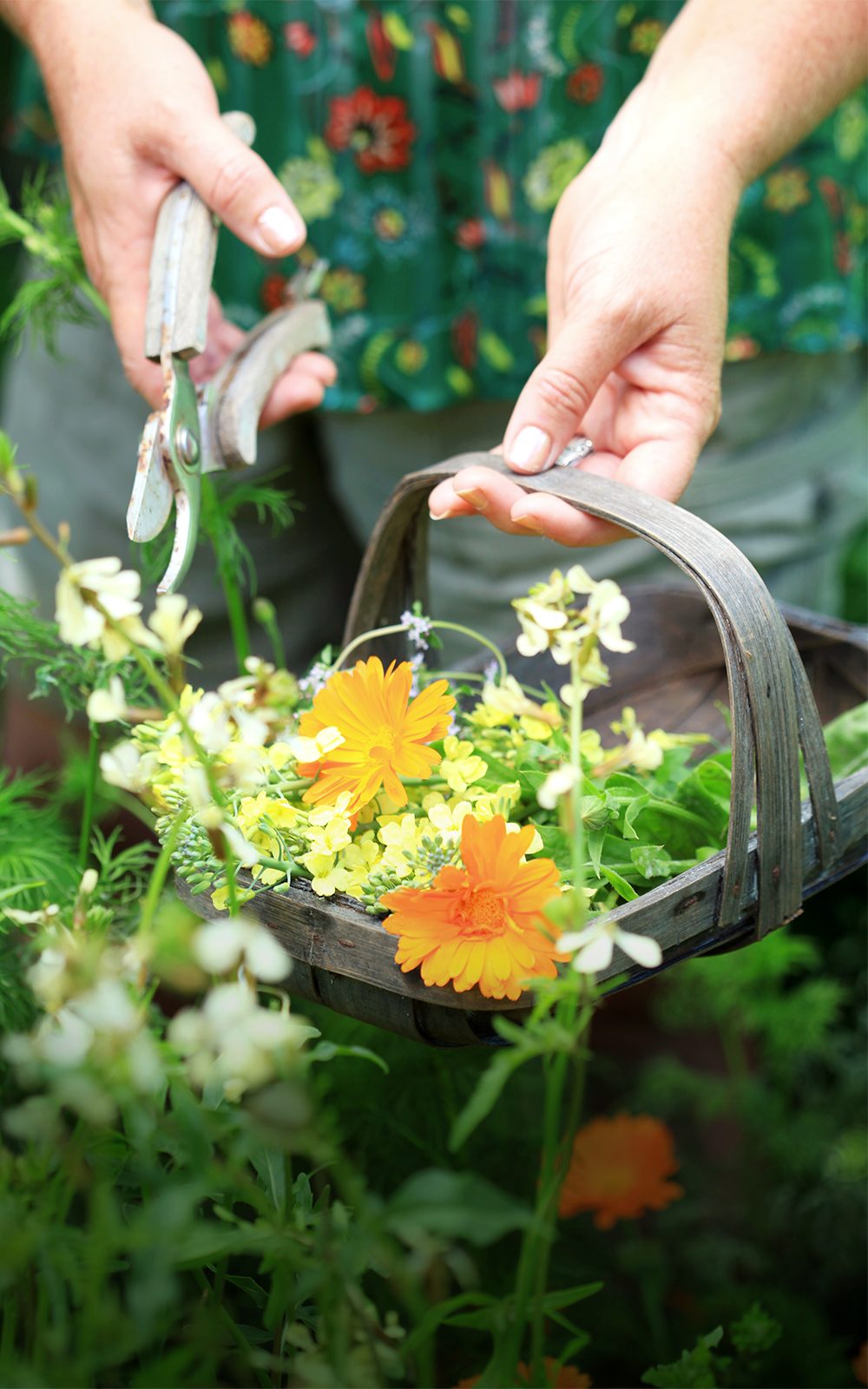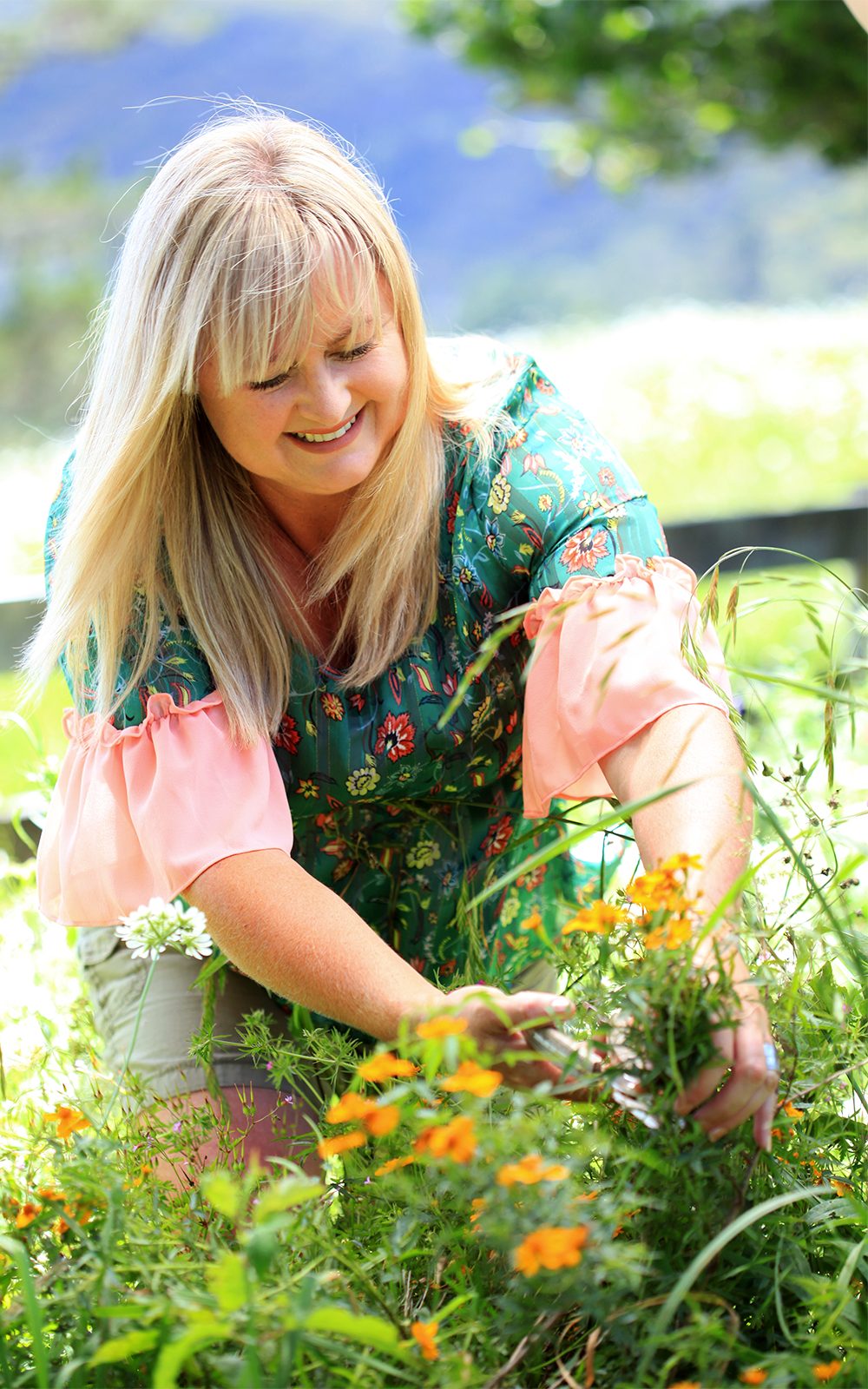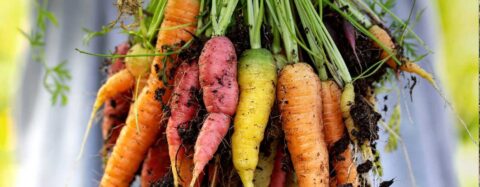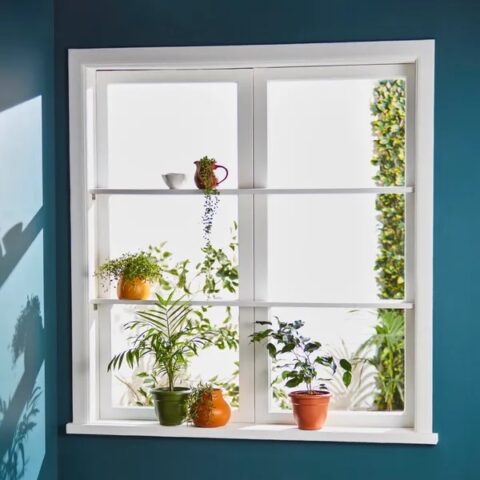Lynda Hallinan grows flowers that are both decorative and delicious and finds they’re also annoyingly tempting to her ravenous Labrador.
You are what you eat, yet no one could accuse our lockdown Labrador puppy, Cricket, of being a delicate wee flower.
There’s nothing he hasn’t tried to eat, from all of my shoes to the kids’ arsenal of Nerf gun ammunition, vintage blankets, our dining table’s legs and an entire loaf of freshly baked sourdough.
Left unattended in the garden, he is a canine composter. He’s sharpened his teeth on my antique seed dibber, chomped through a bag of seed potatoes, eaten the fingers off most of my gardening gloves and filled his garbage guts with grass clippings (he seems to think our ride-on lawn mower is some sort of food truck).
Now 11 months old, Cricket has already racked up several thousands of dollars’ worth of veterinary bills, with the cause of his most recent admission – for intravenous antibiotics to quell a severe gut infection – diagnosed as “due to dietary indiscretions”.

When it comes to digging up and devouring plants, he’s worse than a pūkeko, so I’ve ring-fenced my vegetable patch with ugly plastic netting to keep his paws off. This has had an unintended consequence.
He now considers every basket of produce that emerges from behind that fence as forbidden fruit.
Take the small trug of edible flowers I snipped for our Thrive photo shoot. While I was artfully arranging sweet alyssum, pansies, rocket and borage petals on cupcakes, Cricket ate the pot marigolds (Calendula officinalis). Even though I grow these cheerful orange flowers for their edible petals, I wasn’t exactly expecting them to end up as dog tucker.
Calendula officinalis is a healing ingredient for skin creams and balms, as well as a natural colourant. Use the petals fresh or dried; I scatter the former over salads and treat the latter like poor man’s saffron to add a golden glow to rice dishes and herbal infusions. In 2008, Calendula officinalis was the International Herb of the Year. (In 2021, it’s parsley’s turn.)

The common orange calendula is the most widely grown variety, but pot marigolds also come in shades of bronze-red, peach, yellow and sunset pink, though you’ll need to raise your own plants from seed (order from kingsseeds.co.nz or egmontseeds.co.nz). They self-sow generously, though don’t be surprised if subsequent generations all revert to orange.
Calendulas prefer the cooler weather of spring and autumn to the mildew-inducing days of summer, but the Mexican marigold, Tagetes lemmonii, takes the heat in its stride. This shrubby perennial is easy to grow from cuttings and flowers almost year-round, with sprays of bright yellow single flowers. Both flowers and foliage have a strong citrus/mint scent and a small sprig is all you need to flavour a jug of water. Ditto for pineapple sage.
Coriander, rocket, radish and the wee buttery-yellow blooms of brassicas that have run to seed in your vege patch can all be used as edible garnishes, as can the petals of clove pinks (Dianthus caryophyllus), roses, cornflowers, lemon bergamot, nasturtiums, Scarlet Runner beans and peas. (Note: not sweet peas.)
My garden is spray-free, so any flowering herbs are also fair game for eating at this time of the year, from the pink pom-poms of chives (dip in tempura batter) to English lavender (infuse in sugar) and the teeny blossoms of thyme, basil and oregano, which all impart the same flavour as their foliage, but in a milder dose. With a drizzle of honey, they’re lovely with light desserts such as panna cotta, sorbet and mousse.
The star-shaped blue flowers of borage (Borago officinalis) are possibly the most photogenic of edible flowers, especially encased in ice cubes for summer drinks. Borage flowers are often described as tasting of cucumber, but to me that flavour is so delicate as to be virtually indiscernible. However, if you sprout borage seeds as a microgreen, they do indeed taste like an old-fashioned telegraph cucumber, and getting your children to nibble on them is a neat way to play a trick on their taste buds.
Incidentally, if you have a mind to deliberately, rather than accidentally, plant an edible garden for your pets, start with rosemary, oregano, peppermint, basil and curly-leafed parsley (to freshen doggy breath). All of these can be chopped into homemade dog treats along with – who would have guessed it? – calendula petals, which apparently promote a shiny coat.

Harvest hints
- Pick edible flowers from organic gardens – don’t forage for wildflowers as these may be contaminated with spray residues from pesticides and herbicides.
- Pick flowers early in the morning, as soon as the dew has dried.
- Only eat the petals – remove any stems and green parts from the backs of the flowers as these will taste bitter.
- If not using immediately, store edible flowers in a single layer on top of a moist paper towel inside an airtight plastic container in your fridge.
- If you are unsure what a flower is, or whether it is edible, err on the side of caution. Never eat anything that you can’t identify.








